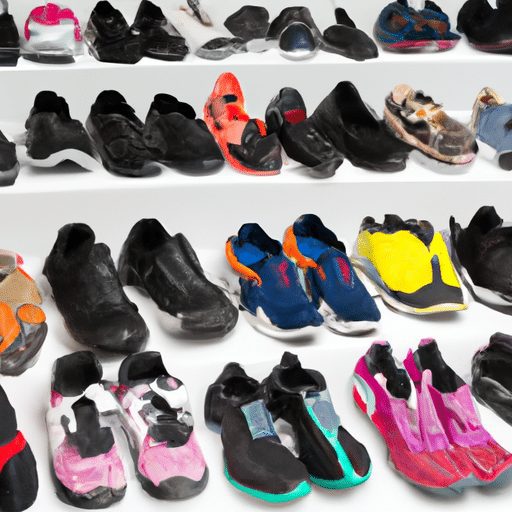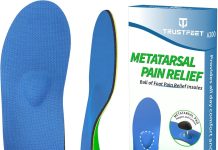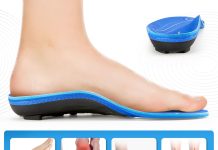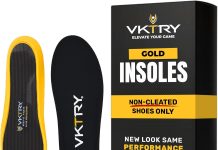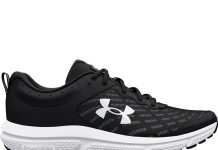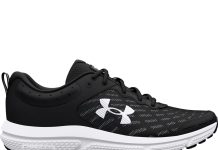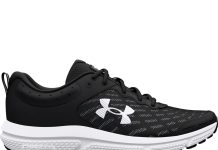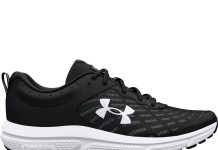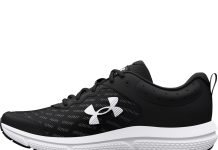We all know how important it is to have comfortable and supportive shoes, but sometimes even the best shoes need a little extra help. That’s where shoe inserts come in. Whether you’re dealing with foot pain, need arch support, or just want to enhance the cushioning in your shoes, finding the right shoe inserts is vital. In this article, we’ll guide you through the key factors to consider when buying shoe inserts so you can make the best choice for your feet. Shoe inserts, also known as insoles or footbeds, are a great way to enhance the comfort and support of your footwear. Whether you’re dealing with foot conditions like plantar fasciitis or simply want to improve the overall fit of your shoes, choosing the right shoe inserts is essential. In this article, we will guide you through the different factors to consider when purchasing shoe inserts, from arch support and cushioning to material and breathability. So grab a cup of tea and let’s dive in!
Arch support
One of the key factors to consider when buying shoe inserts is the level of arch support they provide. Arch support helps to distribute pressure evenly across your feet, relieving stress on the arches and reducing the risk of discomfort and pain. There are three main levels of arch support to choose from: low, medium, and high.
If you have low arches, you’ll benefit from inserts with high arch support. These inserts help to lift and support your arches, preventing excessive pronation and providing stability. On the other hand, if you have high arches, choosing inserts with low or medium arch support can help to cushion the impact and provide proper alignment.
Cushioning
Cushioning is another crucial aspect of shoe inserts to consider. Cushioned inserts provide an extra layer of support and comfort, helping to absorb shock and reducing the strain on your feet. The level of cushioning varies from thin padding to thick padding, allowing you to choose the right amount depending on your personal preferences and needs.
Thin padding inserts are ideal for people who require minimal cushioning but still want some level of comfort. They provide a subtle layer of cushioning without significantly altering the fit of your shoes. Medium padding inserts strike a balance between cushioning and maintaining the natural feel of your shoes, while thick padding inserts are great for those who need maximum shock absorption and cushioning.
Shock absorption
Shock absorption is closely related to cushioning and plays a crucial role in protecting your feet and joints from impact and repetitive motion. Proper shock absorption is especially important for those who engage in high-impact activities such as running or jumping. Look for shoe inserts made from materials like EVA foam, gel, or memory foam, as they are known for their excellent shock-absorbing properties.
EVA foam is a popular material used in many shoe inserts due to its lightweight nature and ability to absorb impact. Gel inserts, as the name suggests, contain gel pockets that help to distribute pressure and reduce shock. Memory foam inserts conform to the shape of your feet, providing personalized support and cushioning.
Stability
Stability is a significant factor to consider, especially if you have a foot condition like plantar fasciitis or flat feet. Inserts with stability features can help to control excessive foot movement and promote proper alignment. Look for inserts made from stable materials like polyurethane or cork, as they offer excellent support and rigidity.
Polyurethane inserts are known for their durability and stability, making them a popular choice for those seeking long-lasting support. Cork inserts are great for people who prefer natural materials and want added stability. These inserts mold to the contours of your feet, providing customized support and stability.
Material
When it comes to the material of shoe inserts, there are several options to choose from, each with its own unique properties and benefits.
EVA foam is a versatile material that offers excellent shock absorption and cushioning. It is lightweight, durable, and provides a good balance of support and comfort. Gel inserts use gel pockets to provide targeted cushioning and pressure relief. They are known for their superior shock absorption properties and are great for those looking for maximum comfort.
Memory foam inserts are designed to conform to the shape of your feet, providing a customized fit and excellent cushioning. They are particularly beneficial for individuals with sensitive feet or those looking for enhanced comfort. Polyurethane inserts are durable and stable, offering long-lasting support. They are a popular choice for people with foot conditions or those who spend long hours on their feet.
Leather inserts are a classic option, known for their durability and breathability. They provide a natural and comfortable feel, making them a great choice for everyday wear. Lastly, cork inserts offer unique properties such as moisture-wicking and antimicrobial properties. They are environmentally friendly and mold to the contours of your feet, providing personalized support.
Size and Fit
Getting the correct size and fit of shoe inserts is crucial for maximizing their benefits. Ill-fitting inserts can cause discomfort and may not provide the support you need. Here are a few factors to consider when choosing the right size and fit:
- Correct size: Make sure to choose inserts that match the size of your shoes. Most inserts come in a range of sizes to accommodate different shoe sizes. Refer to the manufacturer’s sizing guide to determine the right size for your shoes.
- Trim-to-fit options: Some inserts come with trim-to-fit options, allowing you to customize the size and fit. These inserts usually have guidelines or markings that you can follow to trim them to the appropriate size for your shoes.
- Correct shoe type: Different shoe types require different inserts. For example, athletic shoes may benefit from inserts with more cushioning and shock absorption, while dress shoes may require thinner and more low-profile inserts. Consider the type of shoes you’ll be wearing the inserts with to ensure a proper fit.
Foot Condition
If you have specific foot conditions, it’s important to choose shoe inserts that address your particular needs. Here are a few common foot conditions and the corresponding features to look for in inserts:
- Plantar fasciitis: Inserts with good arch support and cushioning are ideal for individuals suffering from plantar fasciitis. Look for inserts that provide a deep heel cup to stabilize the heel and relieve pressure on the plantar fascia.
- Flat feet: People with flat feet require inserts with good arch support to help maintain proper alignment and reduce overpronation. Inserts with a medium to high arch support level are typically recommended.
- High arches: Individuals with high arches can benefit from inserts with adequate arch support to distribute pressure more evenly across the feet. Inserts with a low to medium arch support level can help provide the necessary cushioning and stability.
- Bunions: Inserts with a wide toe box and ample padding can help provide relief and prevent further irritation for individuals with bunions. Look for inserts that offer good arch support and cushioning as well.
- Morton’s neuroma: Inserts with a metatarsal pad or cushioning under the ball of the foot can help alleviate pain and pressure associated with Morton’s neuroma. Look for inserts that feature these specific support features.
Support Level
The level of arch support offered by shoe inserts can vary. It’s essential to choose inserts that align with your individual arch type and support needs.
Low arch support inserts provide minimal arch elevation and are suitable for individuals with high arches or those who prefer a more natural feel. These inserts are typically thin and lightweight, providing subtle support without altering the overall fit of your shoe.
Medium arch support inserts are designed to provide moderate elevation and support. They’re suitable for individuals with normal arches, offering a balance of comfort and stability. These inserts can help prevent excessive pronation and support the natural alignment of your feet.
High arch support inserts are ideal for individuals with low or flat arches. These inserts provide significant elevation and support to lift the arches and help distribute pressure more evenly. High arch support inserts are known for their stability and can reduce foot fatigue and discomfort.
Padding Thickness
The thickness of the padding in shoe inserts contributes to the level of cushioning and shock absorption they offer. Consider the following padding thickness options when choosing inserts:
Thin padding inserts provide minimal cushioning and are ideal for individuals who prefer a more low-profile feel. These inserts are often used in dress shoes or shoes with limited space. Thin padding inserts can provide a subtle layer of comfort without significantly altering the fit of your shoes.
Medium padding inserts strike a balance between cushioning and maintaining the natural feel of your shoes. They provide a moderate level of cushioning and are suitable for individuals who require some cushioning but still want to feel connected to the ground.
Thick padding inserts offer maximum shock absorption and cushioning. They are great for individuals who need extra support or are engaged in high-impact activities. Thick padding inserts can help reduce the strain on your feet and joints, making them suitable for running, jumping, or prolonged standing.
Heel Cup
The heel cup of shoe inserts refers to the contour and depth of the heel area. A well-designed heel cup can provide stability and support for your heels. Here are a few options to consider:
Deep heel cup inserts offer maximum support and stability. They cradle the heels, providing a secure fit and preventing excessive side-to-side movement. Deep heel cup inserts are ideal for individuals with instability or those who require extra heel support.
Medium heel cup inserts provide moderate support and are suitable for most individuals. They offer a good balance between stability and comfort, supporting your heels without restricting movement or feeling too restrictive.
No heel cup inserts have an open design that allows for maximum freedom of movement. These inserts are typically thin and lightweight, making them suitable for individuals who prefer a minimalist feel or for shoes with limited space.
Footbed Shape
The shape of the footbed refers to the contour of the inserts, which should align with the natural shape of your feet. Here are a few options to consider:
Straight footbed inserts have a flat contour and provide a neutral stance. They are suitable for individuals with minimal alignment issues or those who prefer a more natural feel. Straight footbed inserts allow your feet to move freely and maintain their natural shape.
Semi-curved footbed inserts have a slightly curved contour, providing moderate support. They are suitable for individuals with mild alignment issues or those who require additional arch support. Semi-curved footbed inserts help promote proper alignment and distribute pressure evenly.
Curved footbed inserts have a pronounced contour that cradles the arches and provides maximum support. They are ideal for individuals with high arches or those who require significant arch support. Curved footbed inserts help stabilize the feet and prevent excessive pronation.
Breathability
Breathability is an important consideration, especially if you spend long hours on your feet or engage in activities that can cause your feet to sweat. Here are some features to look for when considering the breathability of shoe inserts:
Air circulation is essential for keeping your feet cool and comfortable. Look for inserts with perforations or vents that allow air to flow freely, preventing heat buildup and allowing moisture to escape.
Moisture-wicking properties are beneficial for individuals who tend to have sweaty feet. Inserts with moisture-wicking materials or technologies can help draw moisture away from your skin, keeping your feet dry and preventing odor-causing bacteria from thriving.
Antimicrobial properties can help prevent the growth of bacteria and fungi that can lead to foot odor or infections. Some inserts are treated with antimicrobial agents to keep your feet fresh and healthy.
Durability
Durability is an important factor to consider when purchasing shoe inserts, as you want them to withstand daily wear and provide long-lasting support. Look for inserts made from high-quality materials and those with sturdy construction:
Long-lasting materials like polyurethane, EVA foam, or cork are known for their durability and resilience. These materials can withstand the rigors of daily use and maintain their shape and support over time.
Sturdy construction, such as reinforced edges or stitching, helps to prevent premature wear and tear. Look for inserts with solid construction that can withstand the pressure and movement of your feet.
In conclusion, when buying shoe inserts, it’s important to consider factors like arch support, cushioning, shock absorption, stability, material, size and fit, foot condition, support level, padding thickness, heel cup, footbed shape, breathability, and durability. By carefully evaluating these aspects and choosing the right inserts for your specific needs, you can ensure optimal comfort and support for your feet. So, next time you’re shopping for shoe inserts, remember to take your time, try them out, and find the perfect fit for your feet. Happy shoe shopping!

